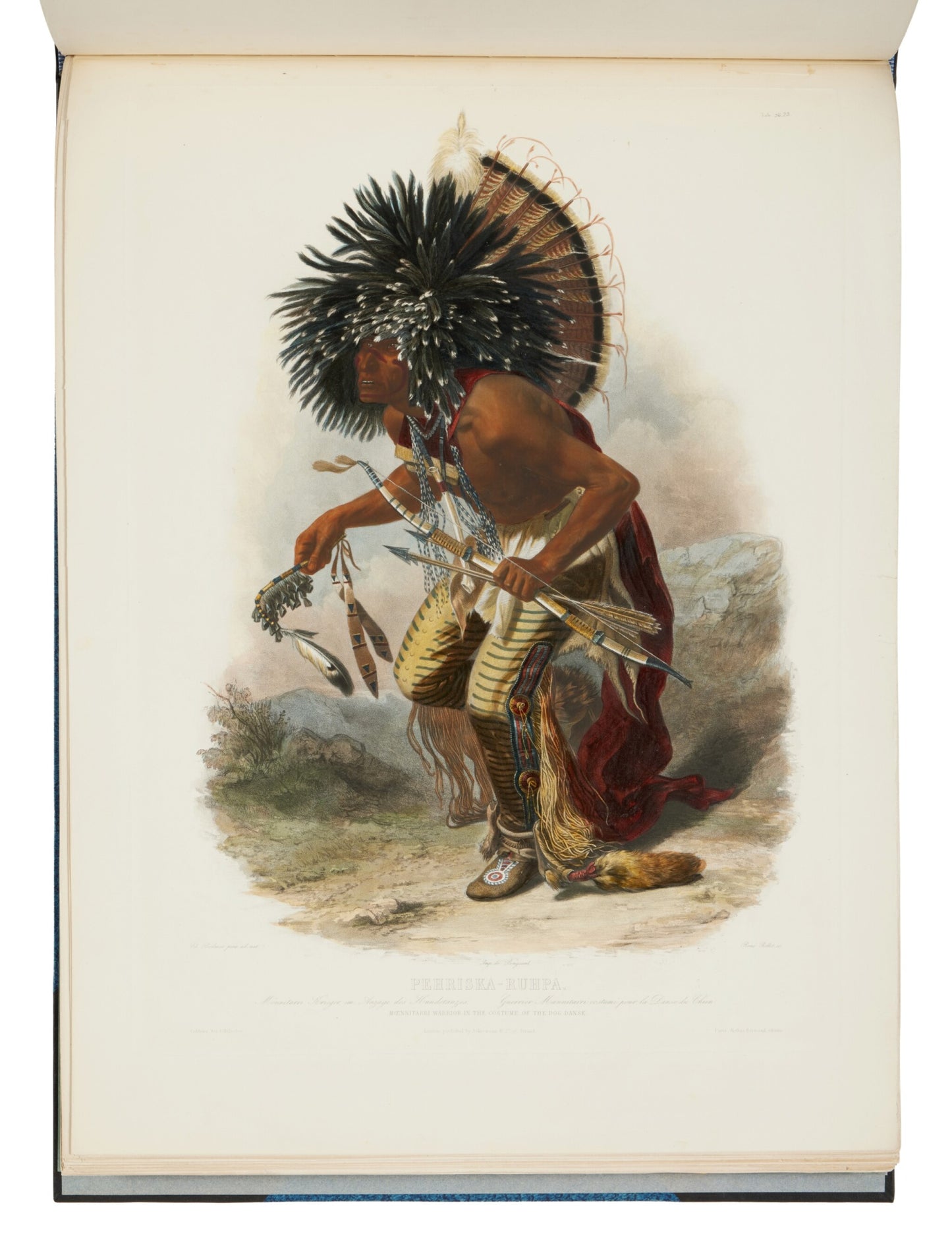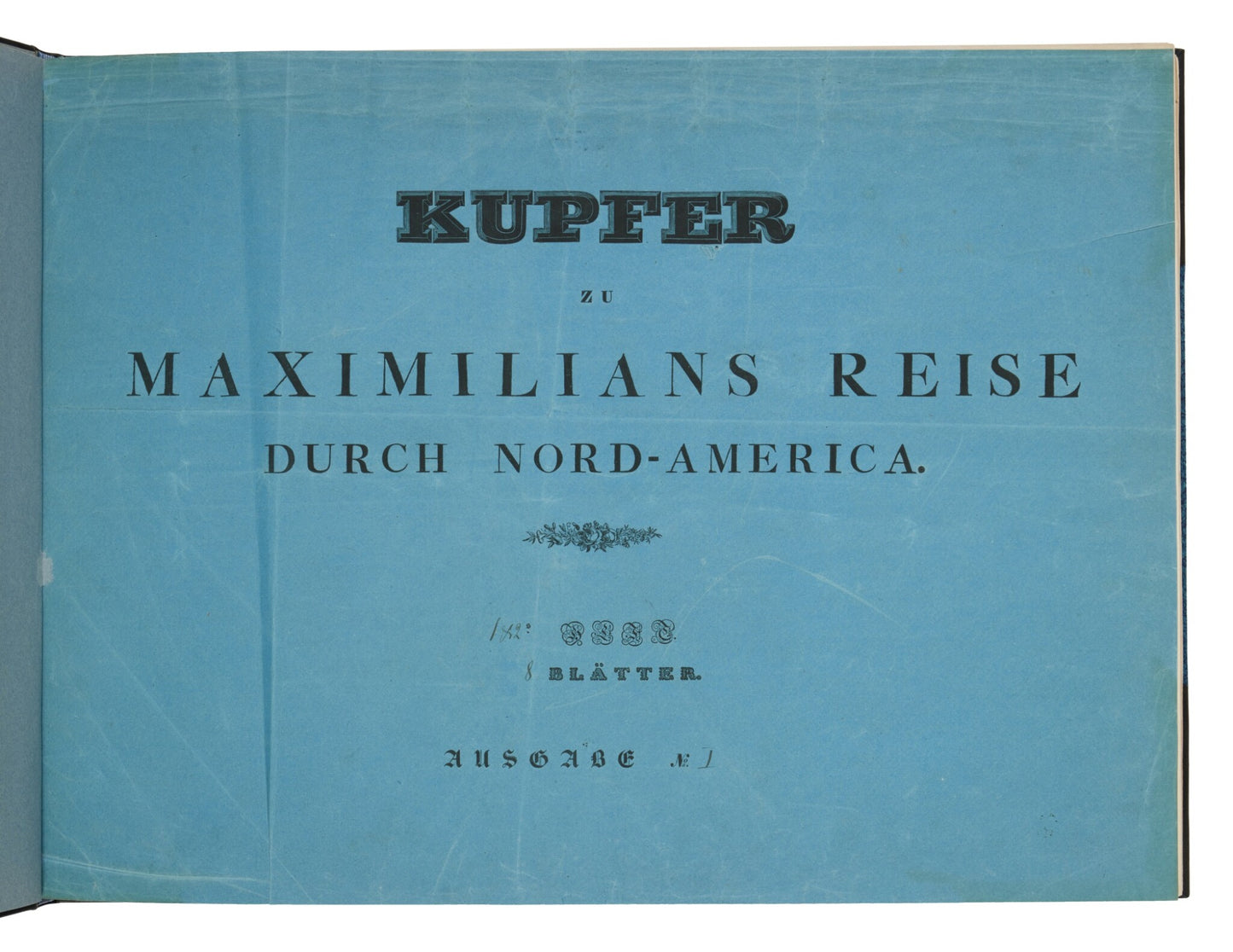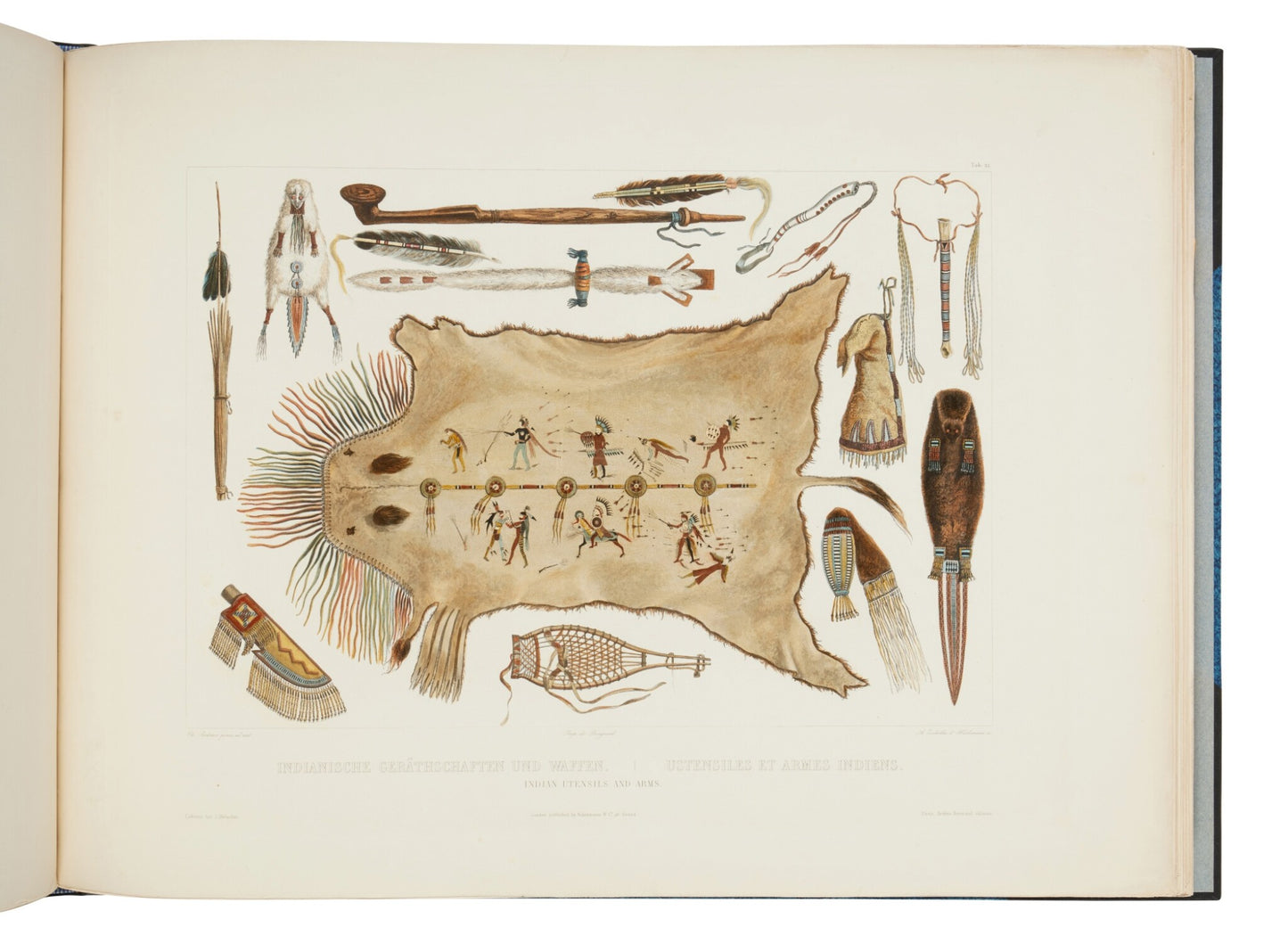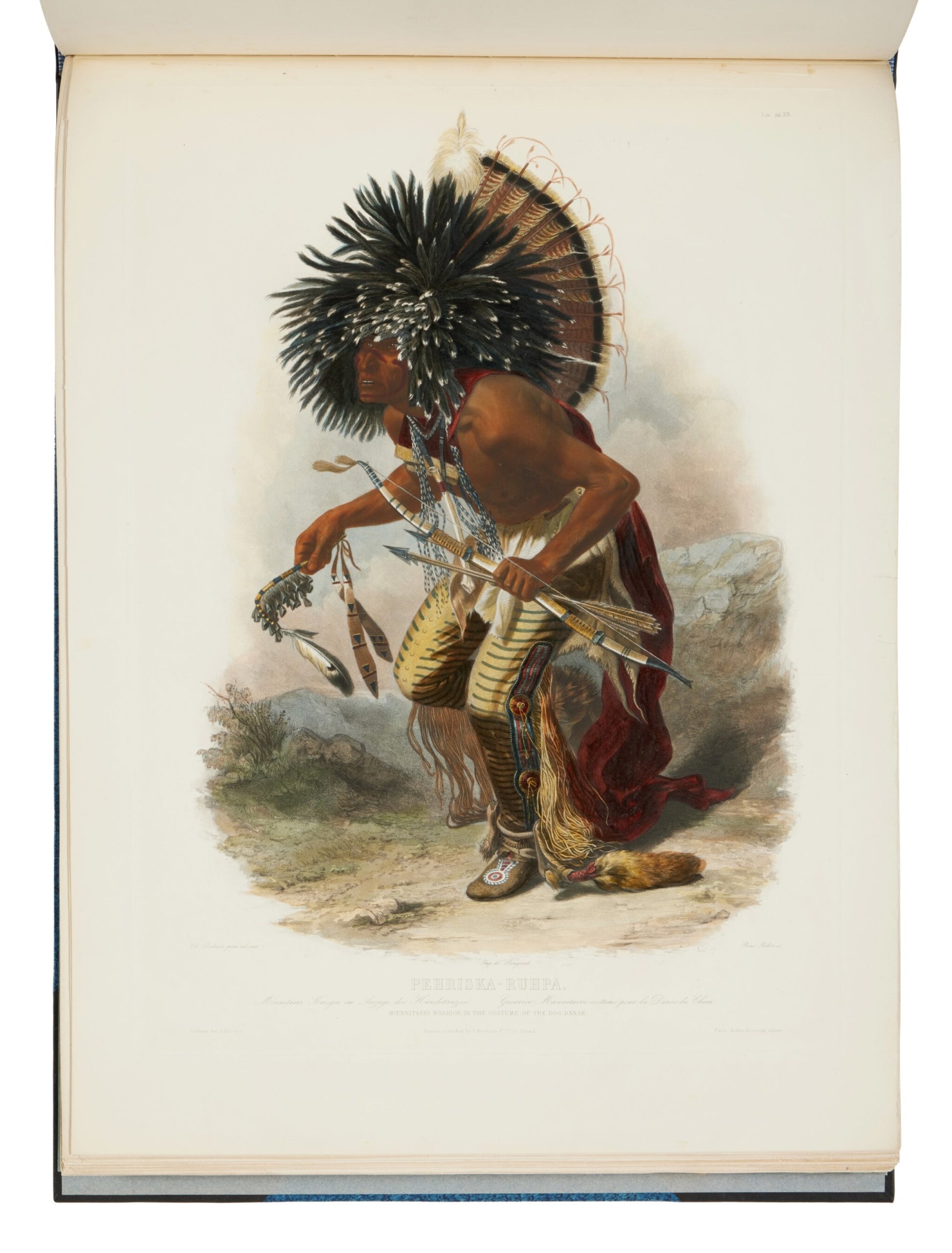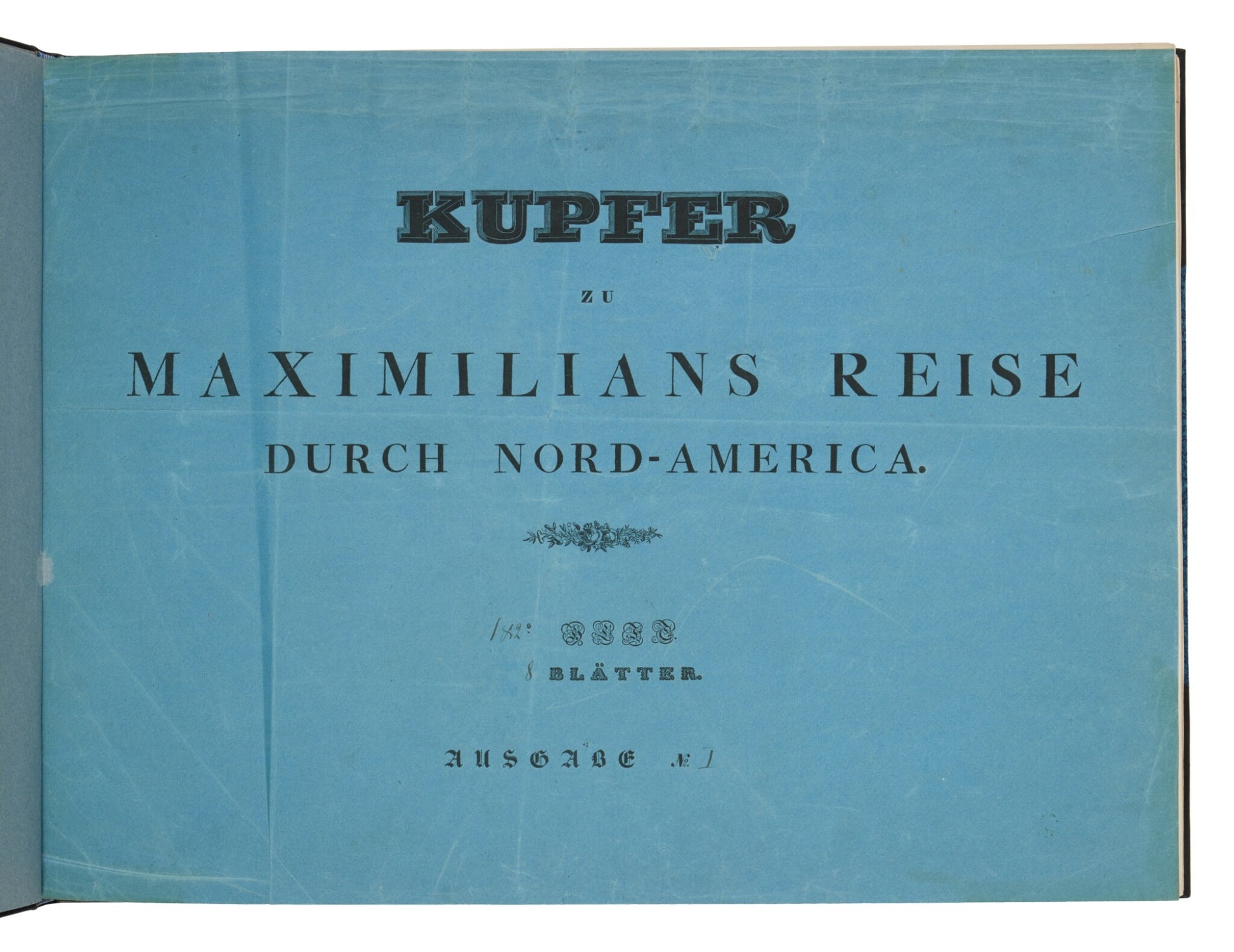from: Audubon and the West
Karl Bodmer. Travels in the Interior of North America. 1832 bis 1834. Coblenz: J. Hoelscher, 1839-41
Karl Bodmer. Travels in the Interior of North America. 1832 bis 1834. Coblenz: J. Hoelscher, 1839-41
Couldn't load pickup availability
Wied-Neuwied, Maximilian zu, Prince — Karl Bodmer | The greatest illustrated American travel narrative
Wied-Neuwied, Maximilian zu, Prince — Karl Bodmer
Reise in das innere Nord-America in den Jahren 1832 bis 1834. Coblenz: J. Hoelscher, 1839-41
Comparable Auction Record: Christies, The Magnificent Library of Norman Bobbins. Part 1: American Color, 06/16/2023, $529,200.
Together 4 volumes, comprising: 2 text volumes, 8vo (233 x 150mm); 1 oblong vignette atlas, 4to (255 x 308mm); and 1 oblong folio atlas (approx. 450 x 610mm). 48 large engraved aquatint tableau plates, all of which have full handcoloring, all after Bodmer; a later compiled set with resulting variance to margins, blind stamps and paper stock, with map and table usually bound in text bound into large folio atlas along with wrappers. All plates in vignette atlas also fully and vibrantly colored, occasional closed tear to margin, some light finger soiling, usual toning to text. All handsomely bound to style in half black morocco over blue marbled paper covered boards, black morocco labels to upper covers of atlas volumes.
A fully colored copy. The greatest illustrated American travel narrative and the most important depiction of American Indians in the frontier era.
Karl Bodmer was a little-known Swiss painter when he was engaged by Prince Maximilian to record his travels among the Plains Indians from 1832 to 1834—a time when the Plains and the Rockies were virtually unknown. With the rest of their company, the royal ethnologist and his artist journeyed from St. Louis up the Missouri River on the American Fur Company steamboat Yellowstone, stopping at a series of forts built by the Fur Company and meeting their first Native Americans at Bellevue. The travelers continued on another steamboat, Assiniboine, to Fort Union, where they met the Crees and Assiniboins. The expedition spent its first winter at Fort Clark, where the Mandans in particular excited Bodmer's attention, although he was also to draw the Mintari and Crow peoples. The explorers continued by keelboat to Fort Mackenzie, which proved to be the westernmost point of their journey. After living among and studying the Blackfeet for several weeks, Maximilian decided it was too dangerous to continue, so the travelers turned southward, reaching St. Louis in May 1834.
Bodmer's engravings of the Indians encountered on the upper Missouri are among the most iconic and celebrated images of the American West. The work remains the first truly accurate depictions of the Plains Indians to reach the general public and one that was already a record of a lost way of life by the time it reached the public as the the 1837 smallpox epidemic killed more than half the Blackfeet and almost all of the Mandan tribes.
REFERENCE:
Abbey 615; Howes M443a."dd"; Pilling, Proof-Sheets 2521; Rader 3652; Sabin 47014; Wagner-Camp 76:1; Goetzmann [et al], Karl Bodmer's America (1984); Ruud, Brandon, Editor, Karl Bodmer's North American Prints, Omaha, 2004
